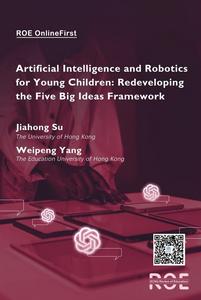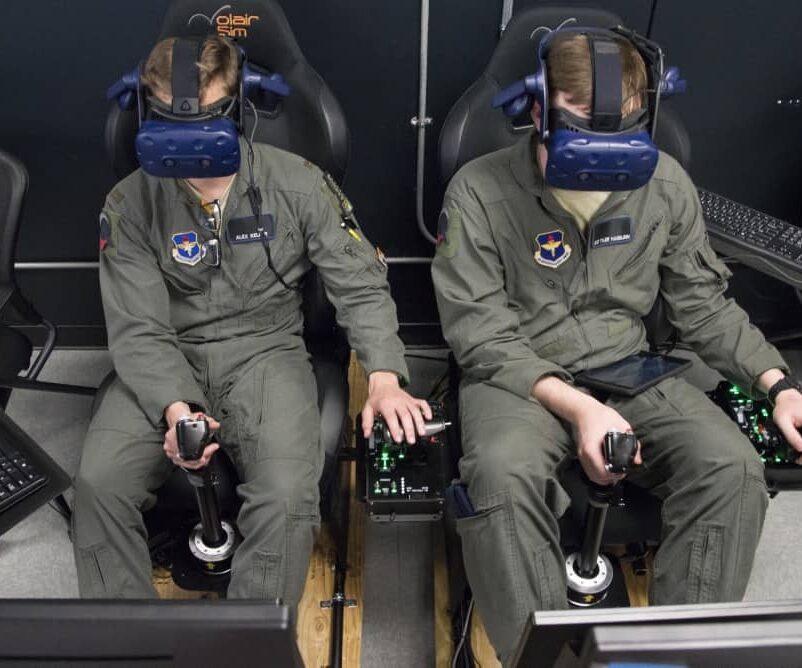
image:
A recent study has put forth a set of educational guidelines to help kids understand key concepts of how robotics and AI systems operate, interact with humans, and affect our world. These efforts will hopefully lead the way to better learning experiences for preschoolers on the ever-growing topics of AI and robotics.
Credit: Dr. Weipeng Yang from the Education University of Hong Kong and Ms. Jiahong Su from the University of Hong Kong
Just like computers, the Internet, and smartphones have become commonplace in our daily lives, artificial intelligence and robotics (AIR) are the next technologies in line set to drastically change how we interact with the world and among ourselves. Various AI-driven applications are already in widespread use, such as Siri, Google Assistant, and ChatGPT, and both industrial- and consumer-grade robots are becoming increasingly capable and accessible.
In our modern societies, where people rely more and more on AIR systems to perform tasks, it’s essential to prepare children and teenagers to understand and use these tools effectively. To this end, the AI4K12 initiative was developed, which comprised a set of guidelines for teaching AI within the context of K-12 education. Notably, AI4K12 outlines “five big ideas of AI” as foundational concepts or key principles that are deemed essential to grasp AI. However, these big ideas are too complex for children younger than six years old.
Against this backdrop, a research team comprising Dr. Weipeng Yang, an Assistant Professor at the Education University of Hong Kong and Ms. Jiahong Su from the University of Hong Kong decided to revise AI4K12’s framework and identify five big ideas of AI that are better suited for young children, especially preschoolers. Their study was published online in the journal ECNU Review of Education on December 10, 2023. Notably, these authors had published another study in this journal on April 19, 2023, in which they proposed a theoretical framework to guide the use of AI tools, such as ChatGPT, in education.
The first big idea addresses the concept of AIR perception. Children should understand that robots and computers can use a variety of sensors to perceive their surroundings and make decisions accordingly. One way to teach this concept is through demonstration, using either a simple robot with an exploratory task or by having children role-play themselves as wandering robots with limited or altered sensing capabilities.
The second big idea introduces the concepts of AI representation and reasoning. Dr. Yang explains: “AI systems work on algorithms and use codes to interpret information, which is different from our understanding and thought process. Young children need to understand that AI’s process of perceiving the world is different from that of humans. They should acknowledge the unique features of AI that complement human qualities.” A hands-on activity like shape-sorting alongside a robotic friend may properly illustrate this big idea in a way children can comprehend.
The third big idea is related to AI learning. Children should understand that AIR systems can process very large amounts of data to arrive at their proposed results or solutions. Moreover, they should be aware that AI can learn from new information to help humans solve tasks.
The fourth big idea revolves around the concept of natural interactions between AIR and humans. Children should understand that AIR systems are developed by humans and lack consciousness or self-awareness.
Finally, the fifth big idea addresses the societal impact of AIR. Children must be taught that AI will have (or have already had) a profound impact on human lives and the world. “Educating children on AI right from the preschool will ensure effective application of AI tools by students,” highlights Dr. Yang.
The article also proposes several ways to engage young children in learning about the five big ideas of AI through the use of robotics. Specifically, the researchers emphasize the importance of interactive and memorable experiences, especially through acts of play and other hands-on opportunities to interact with AIR systems. “Our five big ideas of AI framework redeveloped from AI4K12 will help children better understand AI and its importance in the rapidly developing digital society,” concludes Dr. Yang.
Hopefully, children of all ages will soon be able to experience and understand AI in a healthy and responsible manner, leading to new applications and learning opportunities.
***
Reference
Authors: Jiahong Su1 and Weipeng Yang2
Title of original paper: Artificial Intelligence and Robotics for Young Children: Redeveloping the Five Big Ideas Framework
Journal: ECNU Review of Education
DOI: https://doi.org/10.1177/20965311231218013
Affiliations
1The University of Hong Kong
2The Education University of Hong Kong
About ECNU Review of Education
The ECNU Review of Education is an international peer-reviewed open access journal, established by the East China Normal University (eponymous ECNU). The journal publishes research in the field of education, with a focus on interdisciplinary perspectives and contextual sensitivity. It seeks to provide a platform for the pedagogical community to network, promote dialogue, advance knowledge, synthesize ideas, and contribute to meaningful change.
About Ms. Jiahong Su
Ms. Jiahong Su is currently a Ph.D. candidate in the Faculty of Education at the University of Hong Kong. Her areas of reasearch include technology education, AI, and STEM in early childhood education. She has published many papers in the field of Artifical Intelligence, coding, teacher education and computational thinking. She has also served as a reviewer for various journals, including Computers & Education, Education and Information Technologies, Early Child Development and Care, and Early Childhood Education Journal.
About Assistant Professor Weipeng Yang
Dr. Weipeng Yang is an Assistant Professor at the Department of Early Childhood Education in the Education University of Hong Kong. His research focuses on early childhood curriculum and pedagogy, with specialized interests in STEM education, technology integration, socio-emotional wellbeing, and culture. He holds multiple editorial positions, including Editor at Journal of Research in Childhood Education, Associate Editor at Journal for the Study of Education and Development, and Convenor of Curriculum, Assessment and Pedagogy SIG at British Educational Research Association, among others.
Journal
ECNU Review of Education
Method of Research
Systematic review
Subject of Research
Not applicable
Article Title
Artificial Intelligence and Robotics for Young Children: Redeveloping the Five Big Ideas Framework
Article Publication Date
10-Dec-2023
COI Statement
The authors declared no potential conflicts of interest with respect to the research, authorship, and/or publication of this article.
Disclaimer: AAAS and EurekAlert! are not responsible for the accuracy of news releases posted to EurekAlert! by contributing institutions or for the use of any information through the EurekAlert system.



